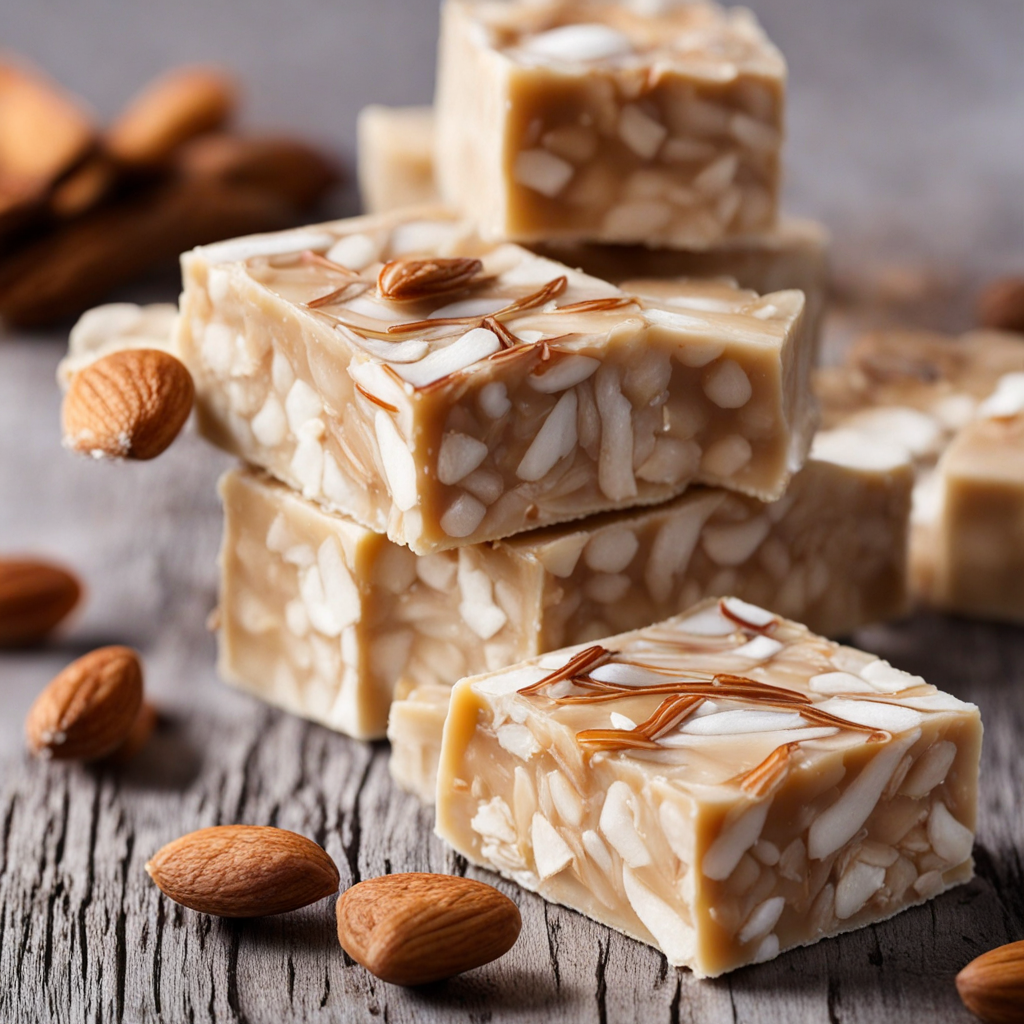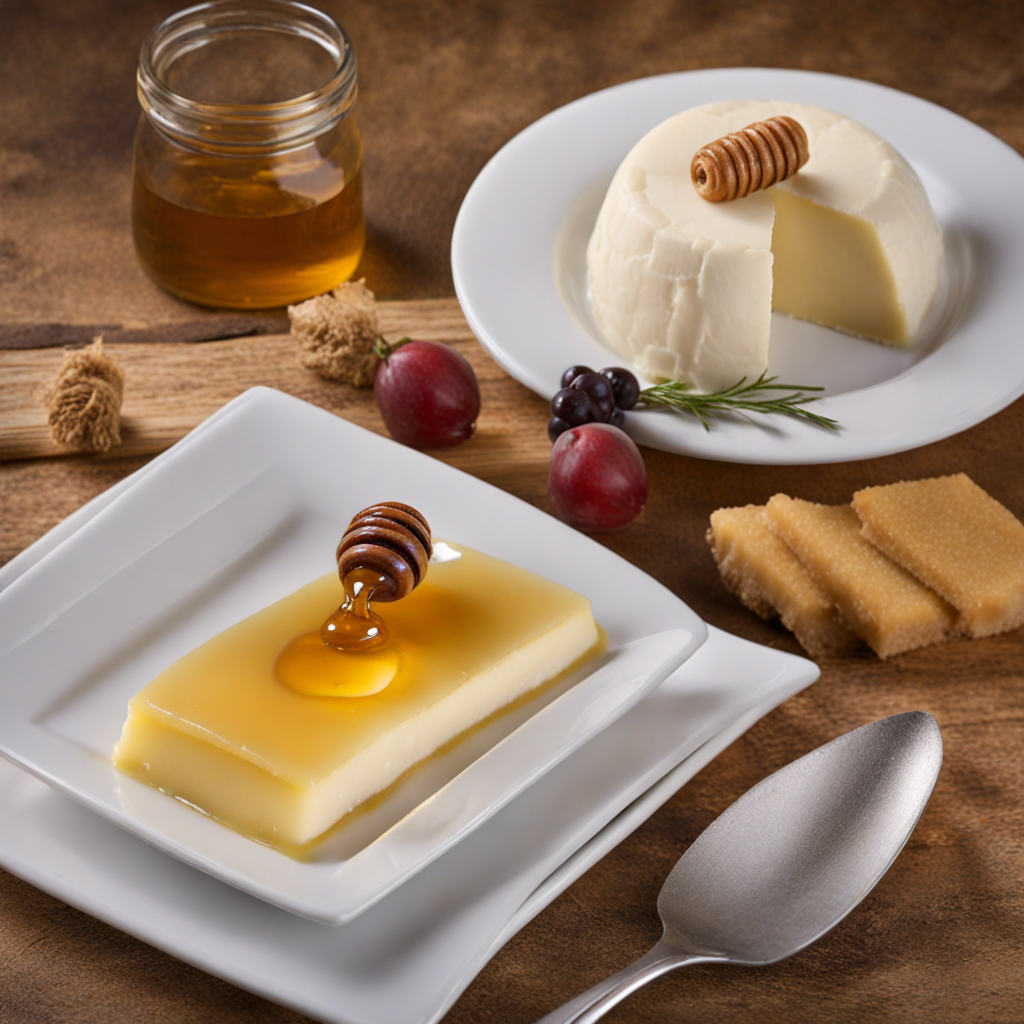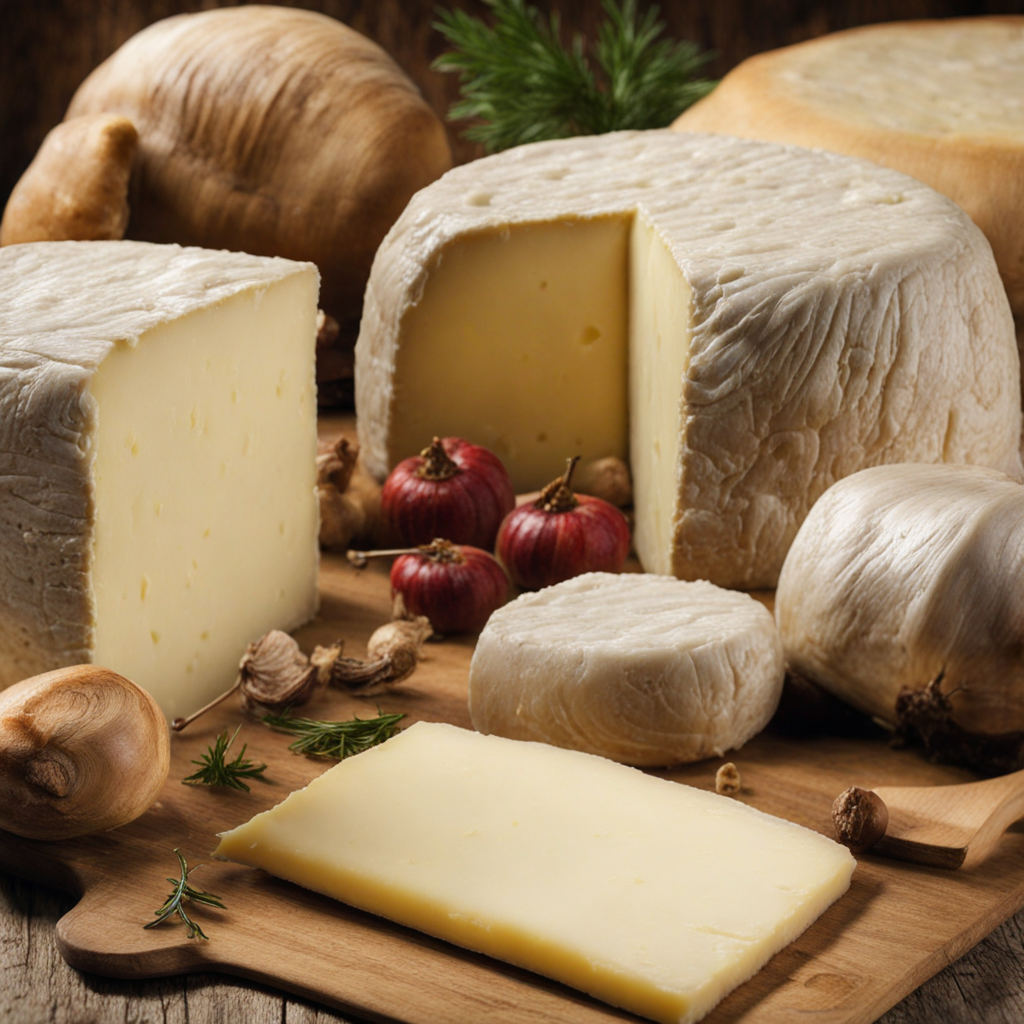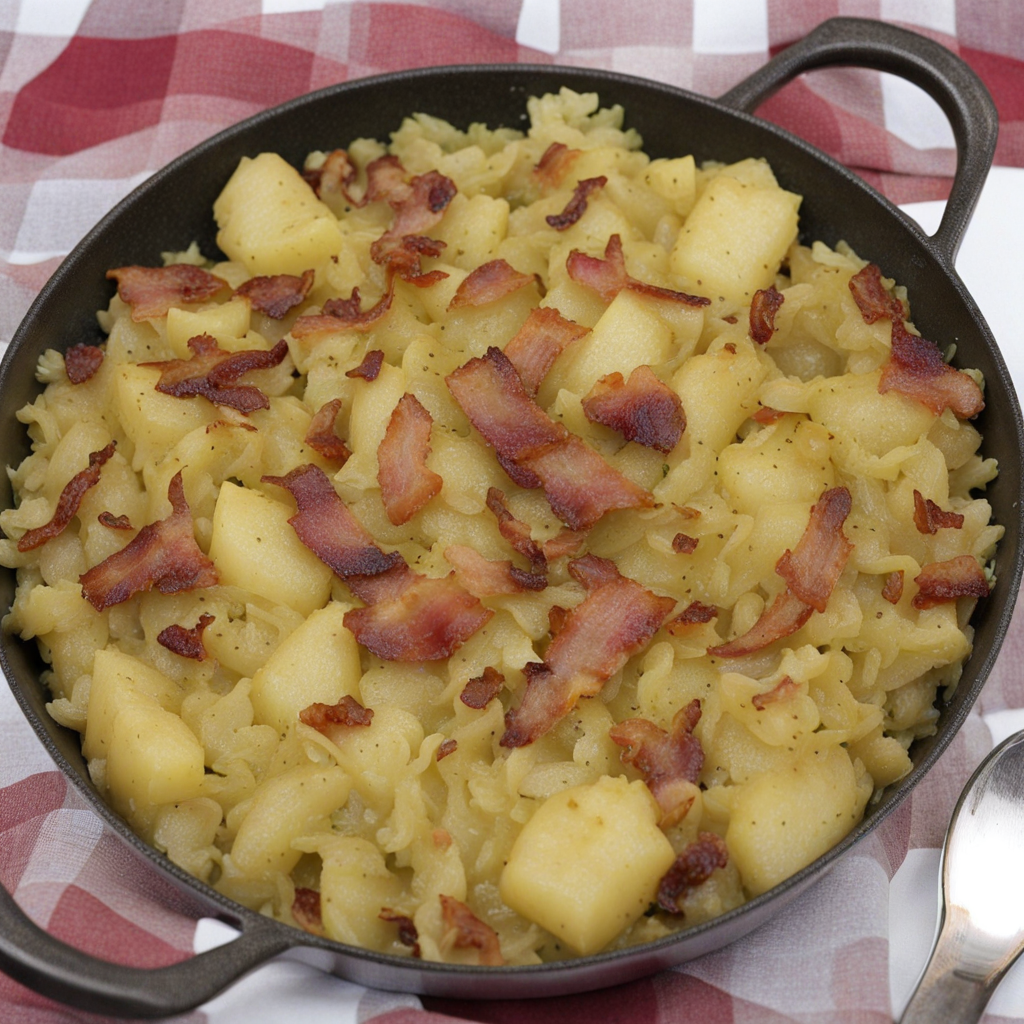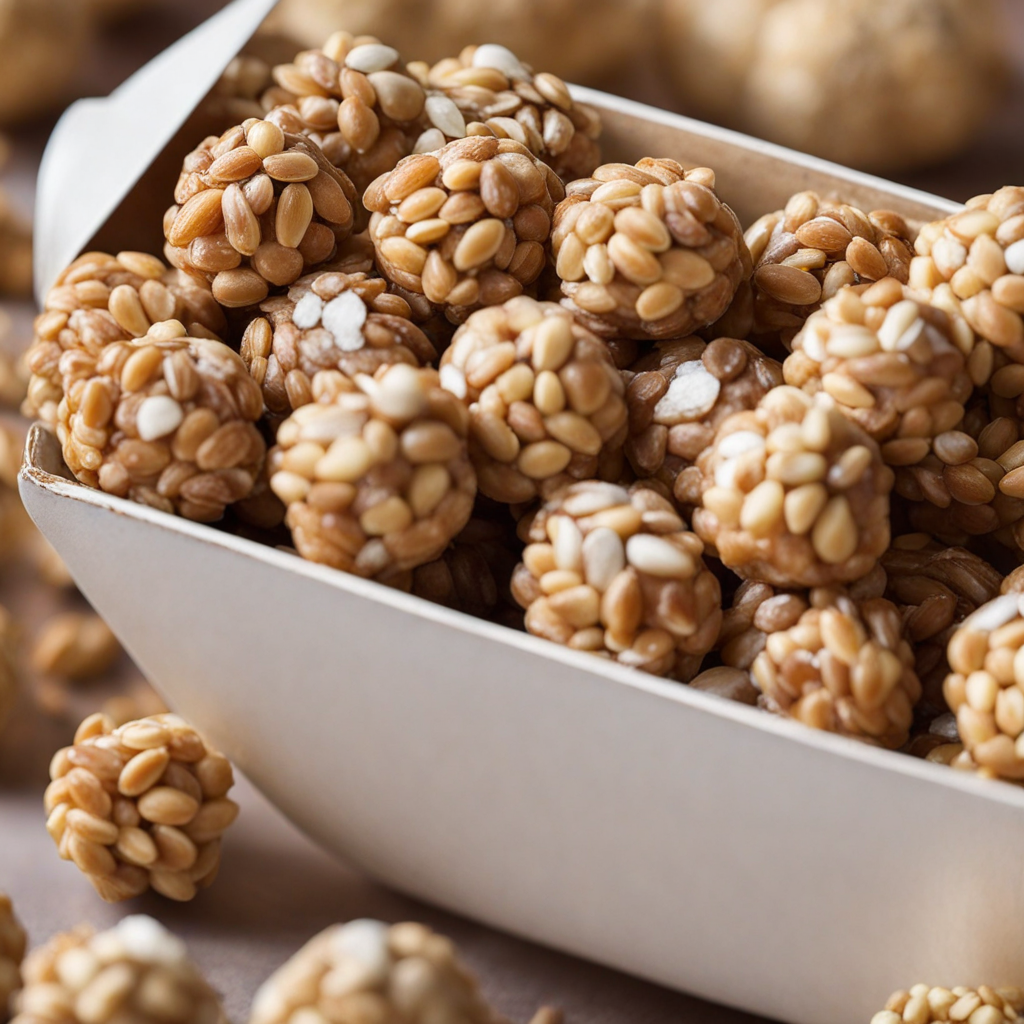Torró
Torró is a delightful confectionery from Andorra, characterized by its rich and nutty flavors. This traditional sweet is made primarily from almonds or hazelnuts, combined with honey and sugar, which are heated and then cooled to achieve a firm yet slightly chewy texture. The blend of roasted nuts provides a robust flavor, while the honey adds a natural sweetness that perfectly balances the richness of the nuts. Each bite offers a satisfying crunch, making it a popular choice for those who appreciate a hearty treat. Often enjoyed during festive occasions, Torró is more than just a dessert; it embodies the cultural heritage of Andorra. The process of making it involves skillful craftsmanship, as the ingredients must be carefully combined and cooked to achieve the desired consistency and flavor profile. Some variations even incorporate chocolate or dried fruits, which enhance the taste and appeal to a broader palate. This versatility makes Torró a delightful option for both traditionalists and those seeking a modern twist. Served in small squares or rectangles, Torró is perfect for sharing, making it a great addition to gatherings or as a thoughtful gift. Its rich, nutty flavors and unique texture are sure to intrigue anyone looking to explore new culinary experiences. Whether enjoyed as a post-meal treat or paired with a cup of coffee or tea, Torró offers a taste of Andorra that is both comforting and indulgent, inviting you to savor the simple pleasures of life.
How It Became This Dish
The Sweet Legacy of Torró: A Culinary Journey Through Andorra Torró, a beloved confection originating from Andorra, is not merely a sweet treat; it embodies the rich tapestry of culture, history, and tradition that defines this small Pyrenean nation. Known for its delightful combination of almond, honey, and sugar, torró has become synonymous with celebration and festivity, particularly during Christmastime. To truly appreciate torró, one must explore its origins, cultural significance, and the evolution it has undergone through the centuries. #### Origins: A Confection of Tradition The roots of torró can be traced back to the Mediterranean region, particularly in Spain, where similar treats known as "turrón" have been enjoyed since at least the 15th century. The history of turrón is often linked to the Moorish influence in Spain, where the introduction of almonds and sugar transformed local culinary practices. As the Moors settled in various regions of the Iberian Peninsula, they brought with them the techniques of candy-making, using ingredients such as honey, nuts, and dried fruits. In Andorra, torró is a distinctive variation of turrón, shaped by the unique geography and culture of this small principality nestled in the Pyrenees mountains. The Andorran version typically features a rich blend of finely ground almonds, honey, and sugar, often flavored with a hint of cinnamon or vanilla. The harsh winters and the rugged landscape of Andorra fostered a culture of preservation, leading to the creation of sweets that could be stored for long periods. Thus, torró became not only a culinary delight but also a vital source of sustenance during the colder months. #### Cultural Significance: A Symbol of Celebration Torró holds a special place in the hearts of Andorrans, particularly during the festive season. The treat is traditionally associated with Christmas, a time when families come together to celebrate and share their bounty. In Andorra, it is customary to gift torró to loved ones, symbolizing goodwill and the sharing of abundance. During the Christmas season, shops and markets are filled with an array of torró varieties, showcasing the artistry and craftsmanship of local producers. The preparation of torró is often a communal activity, with families gathering to make the confection together, passing down recipes and techniques from generation to generation. This practice not only strengthens family bonds but also reinforces the cultural identity of the Andorran people. The act of creating torró is steeped in tradition, with each family adding their twist to the recipe, thus preserving the essence of their heritage while embracing the modern culinary landscape. #### The Evolution of Torró: From Ancient Roots to Modern Delights As Andorra has evolved over the centuries, so too has the production and consumption of torró. Initially, it was a seasonal delicacy, reserved for special occasions and holidays. However, with the advent of tourism and globalization, torró has transcended its traditional roles and emerged as a year-round treat. Local artisans and confectioners have innovated new flavors and presentations, appealing to both locals and visitors alike. In recent years, the variety of torró has expanded immensely. While the classic almond torró remains a staple, modern iterations include flavors such as chocolate, fruit, and even exotic spices. Some artisanal producers have begun experimenting with organic and locally sourced ingredients, catering to a growing demand for sustainable and health-conscious options. This evolution reflects a broader trend in culinary practices, where traditional foods are reimagined to suit contemporary tastes while maintaining their cultural significance. Moreover, torró has found its way onto the international culinary stage. Food festivals and markets showcase Andorran torró, allowing visitors to experience this unique treat and learn about its history. As tourism has increased, so has the visibility of Andorran cuisine, with torró serving as a delightful ambassador of the region's culinary heritage. #### The Art of Making Torró: Techniques and Traditions The process of making torró is an art form in itself, requiring skill and precision. Traditionally, the almonds are roasted to enhance their flavor before being ground into a fine paste. This paste is then combined with honey and sugar, cooked over low heat until it reaches the desired consistency. Once removed from the heat, the mixture is poured into molds and left to cool, solidifying into the delicious confection known as torró. While the basic recipe remains largely unchanged, many artisans have adopted modern techniques to improve efficiency without sacrificing quality. For instance, some producers now utilize machinery to grind the almonds and mix the ingredients, yet the traditional methods are still revered and practiced by many local craftsmen. This balance between tradition and innovation ensures that torró retains its authentic flavor while adapting to contemporary production demands. #### Torró Today: A Culinary Treasure Today, torró is more than just a sweet treat; it stands as a symbol of Andorran identity and pride. The artisanal production of torró supports local economies, promoting the preservation of traditional craftsmanship and culinary heritage. Events such as the Andorra Gastronomic Festival highlight the importance of torró in the region's culinary landscape, encouraging both locals and tourists to indulge in this delightful confection. As Andorra continues to navigate the complexities of the modern world, torró remains a steadfast reminder of the nation’s rich history and cultural vibrancy. Whether enjoyed during festive celebrations or as a simple everyday treat, torró encapsulates the essence of Andorran life—its resilience, creativity, and deep-rooted traditions. In conclusion, torró is more than just a sweet confection; it is a narrative woven into the fabric of Andorran culture. From its ancient origins to its modern iterations, torró represents a unique blend of tradition, community, and innovation. As we savor this delicious treat, we not only indulge in its flavors but also partake in a centuries-old legacy that continues to thrive in the heart of Andorra.
You may like
Discover local flavors from Andorra


